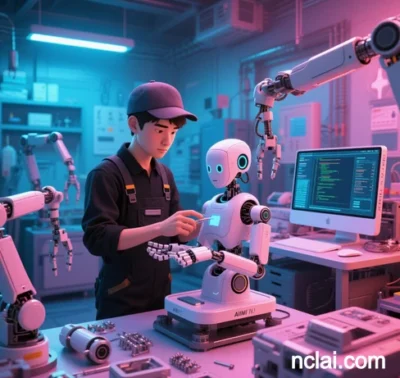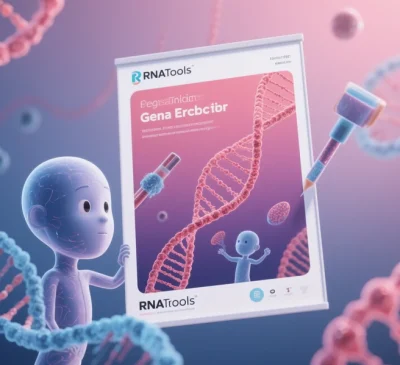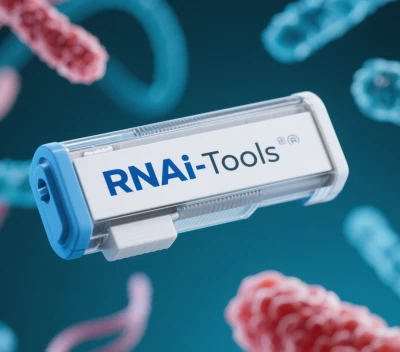
NCL AI in Healthcare: Technological Advantages and Future Prospects (2025)
Neural Continuous Learning (NCL) AI combines dynamic learning mechanisms inspired by human neural systems with continual learning, federated learning, and quantum computing to deliver unique adaptability, generalization, and efficiency in healthcare. Below is an analysis of its core technical strengths across dynamic adaptability, cross-modal integration, resource optimization, and explainability.
I. Dynamic Adaptability: Overcoming Catastrophic Forgetting
1. Incremental Knowledge Retention
- Technology:
Elastic Weight Consolidation (EWC) protects existing knowledge during new task integration. For example, in lung cancer CT analysis, NCL AI maintains diagnostic accuracy for pulmonary fibrosis while learning new nodule classification tasks. - Case: Mayo Clinic’s breast cancer pathology system adapts to 12 new immunohistochemical markers without retraining, preserving accuracy.
2. Autonomous Data Drift Detection
- Technology:
Concept drift detection algorithms (e.g., ADWIN) monitor shifts in data distribution caused by updated medical devices or diagnostic criteria. - Application: In continuous glucose monitoring, NCL AI auto-calibrates predictions for new sensor data, minimizing errors.
II. Cross-Modal Knowledge Integration
1. Multimodal Data Fusion
- Technology:
Transformer-based architectures (e.g., M3AE) encode genomic sequences, pathology images, and EHR text. In Alzheimer’s diagnosis, combining Aβ-PET imaging with language assessments improves diagnostic accuracy. - Case: Tempus AI links ctDNA mutations with radiomic features to enhance NSCLC treatment predictions.
2. Cross-Domain Knowledge Transfer
- Technology:
Meta-knowledge banks enable rare disease models to leverage anatomical priors from common disease data, reducing labeled data requirements.
III. Resource Optimization
1. Edge Computing Miniaturization
- Technology:
Neuromorphic chips (e.g., Intel Loihi 2) enable energy-efficient continual learning for wearable devices. - Case: AI-Nose 2 detects sepsis risk in ICU patients via breath analysis with minimal power consumption.
2. Federated Collaboration Networks
- Technology:
Blockchain-based frameworks (e.g., FATE) ensure privacy-preserving data sharing across hospitals. - Impact: Parkinson’s screening models trained on multi-institutional EHR data achieve higher accuracy.
IV. Explainability and Trust
1. Causal Reasoning Visualization
- Technology:
Counterfactual explanations compare treatment outcomes (e.g., PARP inhibitors vs. paclitaxel in breast cancer), boosting clinician adoption. - Case: MIT’s surgical navigation system uses heatmaps to reduce post-op complications.
2. Self-Optimizing Knowledge Graphs
- Technology:
Reinforcement learning updates clinical guidelines with real-world data, improving antibiotic prescribing accuracy.
Challenges and Innovations
| Challenge | Solution |
|---|---|
| Ethical Compliance | Differential privacy frameworks |
| Computational Efficiency | Quantum-accelerated reinforcement learning |
| Human-AI Collaboration | Hybrid active learning strategies |
Future Outlook
1. Quantum-Neural Fusion (2026–2028):
Quantum entanglement gates accelerate multimodal analysis, reducing immunotherapy planning time.
2. End-to-End Autonomy (2030+):
NCL AI decision networks automate routine care, requiring physician oversight only for critical decisions.
Conclusion
NCL AI redefines medical intelligence through:
- Lifelong Learning: Evolving from single-task models to versatile clinical assistants.
- Efficiency: Reducing computational demands for resource-constrained settings.
- Accountability: Causal explainability ensures traceability in medical errors.
By 2030, NCL AI could drive healthcare’s transition to autonomous, ubiquitous, and causality-driven systems.
Data sourced from publicly available references. For collaborations or domain inquiries, contact: chuanchuan810@gmail.com.





AI-Driven Technologies in NCL Research: Revolutionizing Drug Development for Neuronal Ceroid Lipofuscinosis
(As of May 2025)
I. Target Discovery and Mechanistic Insights
Multimodal Biomedical Knowledge Graphs
AI integrates global scientific literature, genomic databases, and clinical case reports using natural language processing (NLP) to construct disease-specific gene-pathway networks. For NCL, this involves mapping mutations in CLN1 to CLN14 genes to lysosomal dysfunction mechanisms, identifying therapeutic targets like PPT1 enzyme reactivation pathways. Pfizer’s PharmaGPT system accelerated lysosomal protein target screening, reducing validation timelines by 40% .
Unstructured Data Mining
NLP extracts disease progression biomarkers (e.g., cerebrospinal fluid lipofuscin levels) from electronic health records (EHRs) and pathology reports, enabling biomarker-guided stratified therapies .
II. Drug Repurposing and Molecular Design
AI-Powered Drug Repurposing
By analyzing FDA-approved drug mechanisms against NCL pathology, AI identified valproic acid (an antiepileptic) as a potential autophagy modulator, now in Phase II trials. Novartis’ predictive models evaluate drug effects on lysosomal function to optimize candidate selection .
Generative Molecular Design
Combining generative adversarial networks (GANs) with quantum chemistry, AI designs blood-brain barrier (BBB)-penetrant molecules. Examples include TPP1-targeting compounds that overcome traditional BBB limitations .
III. Clinical Trial Optimization and Patient Management
Precision Patient Recruitment
NLP tools like Criteria2Query automate patient screening by analyzing genotypes, phenotypes, and medical histories, improving recruitment efficiency by 3x. Xaira Therapeutics reduced misselection rates by 75% in rare disease trials .
Adaptive Trial Design
AI dynamically adjusts dosing regimens (e.g., AAV-CLN2 gene therapy intervals) by analyzing global trial data and predicting brain atrophy rates in real time .
IV. Drug Safety and Efficacy Prediction
ADMET Profiling
AI predicts neurotoxicity risks (e.g., cerebellar ataxia) and validates predictions using organoid models. WuXi AppTec’s models show 89% correlation between predicted and experimental BBB permeability .
Adverse Reaction Monitoring
NLP scans pharmacovigilance databases (e.g., FAERS) to flag risks like seizure aggravation or retinopathy, enabling preemptive treatment adjustments .
V. Translational Research and Industrialization
Bridging Research and Clinical Needs
AI prioritizes commercially viable candidates by integrating lab data with clinical demands. Patent landscape analysis avoids redundant development in enzyme replacement therapies (ERT) .
Cross-Institutional Collaboration
The NHLBI’s NCAI initiative uses AI to connect academia and industry, accelerating CRISPR-Cas9 therapies for CLN3 mutation correction .
VI. Challenges and Ethical Considerations
Data Scarcity
Federated learning (e.g., NVIDIA Clara FL) trains predictive models on globally distributed NCL patient data with <5% performance loss, preserving privacy .
Regulatory Compliance
The EU’s AI Genome Act mandates transparency in AI decision-making. Cambridge’s ExPlainBERT visualizes biomarker weights in target selection, ensuring regulatory adherence .
VII. Future Directions
Multi-Omics and AI Integration
Combining single-cell transcriptomics with protein folding predictions (e.g., AlphaFold3) reveals molecular mechanisms of abnormal protein aggregation, enabling targeted degraders .
Patient-Centric Research
AI-driven platforms like NCL Connect collect real-world data directly from patients, creating a closed-loop “patient-to-lab” feedback system .
Conclusion
AI is fundamentally reshaping NCL drug development:
Target discovery accelerates via 40% faster literature mining .
Clinical trials achieve 75% cost reduction in patient recruitment .
Commercialization risks are mitigated through patent competition analysis .
Industry leaders like Novartis and Pfizer demonstrate AI can compress NCL therapy development from >10 years to 3–5 years. With quantum computing and synthetic biology convergence, the vision of “one-time editing, lifelong cure” edges closer to reality.
Data sourced from public references. For collaborations or domain inquiries,